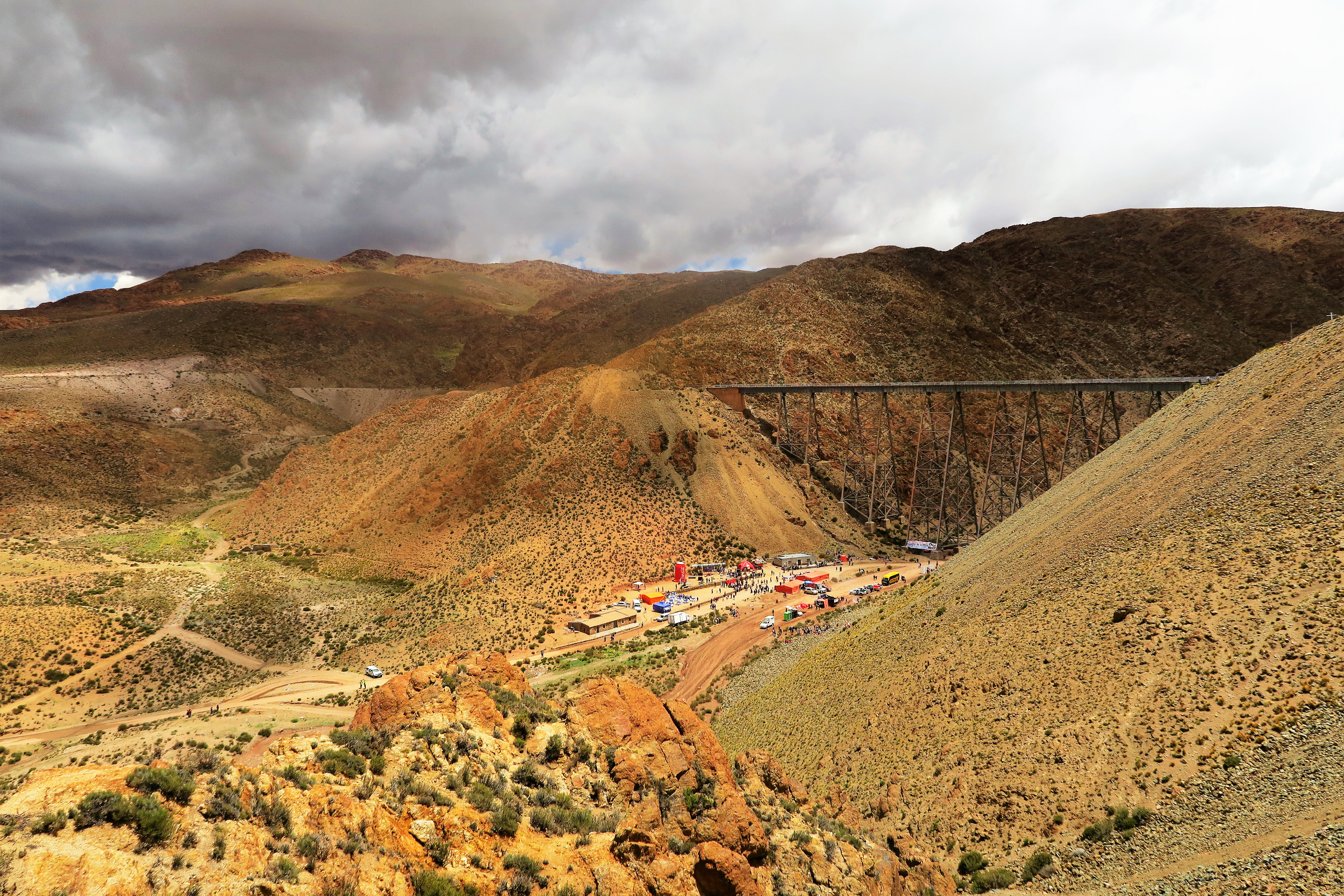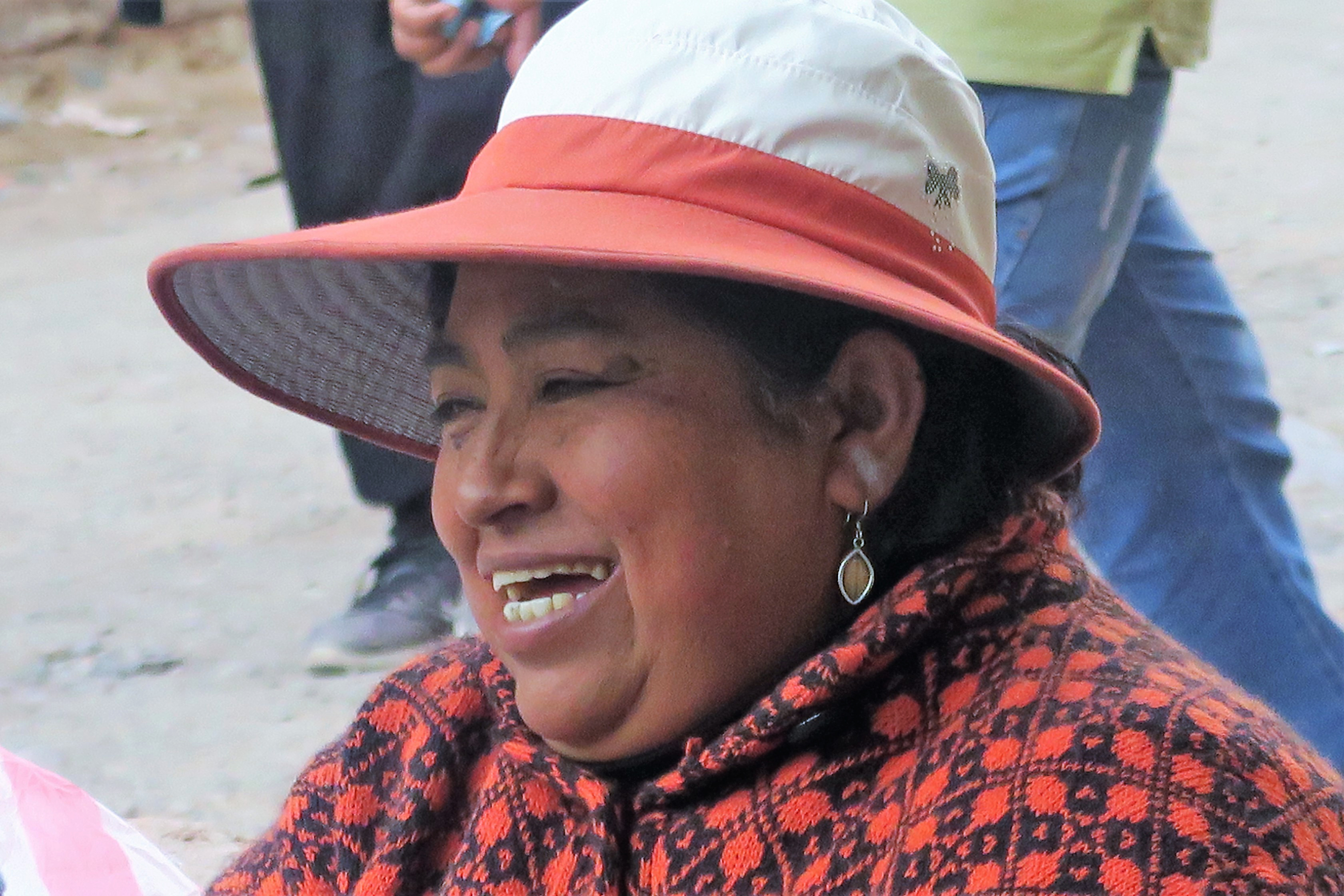SAN ANTONIO DE LOS COBRES, ARGENTINA — Our heads were in the clouds at the very thought of booking seats on the Train to the Clouds (Tren a las Nubes), which departs from this remote outpost in northwestern Argentina. But our sense of adventure was piqued and we were walking on cloud nine for months in anticipation of riding one of the world’s highest train routes.
It quickly became apparent, though, that this was no ordinary train. It comes equipped with oxygen tanks, an onboard medic and free coca tea in the snack bar — all safeguards against altitude sickness, since we’ll be reaching heights of 4,220 metres above sea level. (Coca plants, native to mountainous South America, have medicinal properties; oxygen explains itself.)
Oh, and there’s no “rack and pinion” steering on this train, either. So that meant our blue train zigzags and curves and avoids deep up-and-down plunges. Whew!
Previously, we'd spent three days in the city of Salta ("the beautiful one") acclimatizing ourselves to the altitude and delighting in lively nightlife, a 16th-Century square and intriguing displays of ancient Incan mummies. Getting to San Antonio had involved a wonder-filled road trip through the foothills of the Andes. Along the eway we see desert-like terrain, tall, flowering cacti, a tiny shrine to the Virgin, but very little else.
After pausing to admire a train trestle high above the road, by late morning we reach the station where swarms of handicraft vendors await crowds of day-trippers.
I spotted one girl with her meagre offerings looking rather sad, so I impulsively gave her 15 pesos (about 65 cents Cdn), in hopes of cheering her up. But her friend piped up, and in English tells me: “She’s not sad, she just wants love!”
“Oh,” I reply, “Don’t we all?”
At which all three of us break into laughter and I take her picture, looking happy and smiling.

Above: The famous train cuts through Argentina's famed salt flats.
Outside our train window looms the magnificent Andes. Bolivia lies to the north and Chile to the west. Some of the barren peaks I’m admiring are topped with snow. The skies above are intensely blue, dotted with cottony clouds. However, I’m told the word “cloud” in the train’s moniker refers to the vapour trails it’s old steam locomotive leaves behind as it chugs up the massive inclines.
Originally designed to transport borax, copper, lithium and other valuable minerals from Argentina to Chile’s Pacific ports, the train was 20 years in the planning and launched its commercial route in 1948. The name Train to the Clouds is a title from a 1960s film about the train and the marketers decided to run with it.
Despite recent improvements to tracks and rolling stock, rock falls keep interfering with regularly scheduled trips from Salta, so, for the past several years this has been designated a “heritage train” and follows a truncated route that begins in San Antonio de las Cobres, the highest town in this part of Argentina (3,775m), close to Copper Mountain and its mine.
As a prophylactic against altitude sickness (I’ve been taking pills, too) I dutifully chew a handful of dried coca leaves — like bay leaves, but smaller — purchased in a market the previous day. They taste much as you’d expect from a bunch of dried leaves. Bitter.
We’re seated in the “English car,” with an English-speaking guide who tells us about the train and its history. When not transfixed by her story and the entrancing views, we fall into easy conversations with our fellow travellers — Norwegians, Russians, Brits. Bonds form. No ordinary ride, this train seems to transform its passengers into adventurers — at least for a day.


Above: Passengers get to see many of Argentina's remote village tucked away in valleys and meet amazing locals.
Towering peaks give way to vast, empty valleys as we approach the terminus at La Polvorilla Viaduct. Our guide proclaims our upcoming encounter with “a miracle of Argentinian engineering.”
Constructed between 1930-32, the curved viaduct is 70m high, 224m long, rests on six pillars and sits at 4,200m above sea level. Cameras appear, eager passengers snap away, precariously leaning out the windows to get the best shots. The earth below seems very far away indeed.
Until the original route from Salta is fully restored for round-trip journeys, the stop after this breathtaking bridge marks the end of the line. But there’s much more to see in the neighbourhood.
Most excursions from Salta include our next stop, the dazzling Salinas Grandes, shimmering salt flats a short but bumpy ride away, where the sun flashes over endless blue waters, mounds of white salt, and some curious mud-coloured structures, including a giant-sized llama.
Our luck held that memorable February day as we drove past herds of domesticated llamas and flocks of wild vicunas to the mountain town of Purmamarca. Unexpectedly, we happened on an old-time mountain carnival festival that was in full swing against the dramatic backdrop of the soaring Andes. Folks were laughing and madly splashing one another with tortilla flour, while local bands rocked the town hall. Tourists joined in the fun, dancing and waving flags, smiles on their flour-plastered faces, joyfully partying away the afternoon.
Many revellers were costumed as visitors from the underworld, complete with horns and devils’ masks. The carnival offers a mix of Incan and Christian cultures and the devils seemed to be enjoying every minute.
In the plaza at the end of the main street, the market overflowed with local handicrafts: woven woollen wraps, silky-soft alpaca scarves, knitted dolls and toy-sized llamas. Naturally we purchased some — memories of our trip through the clouds into another world.